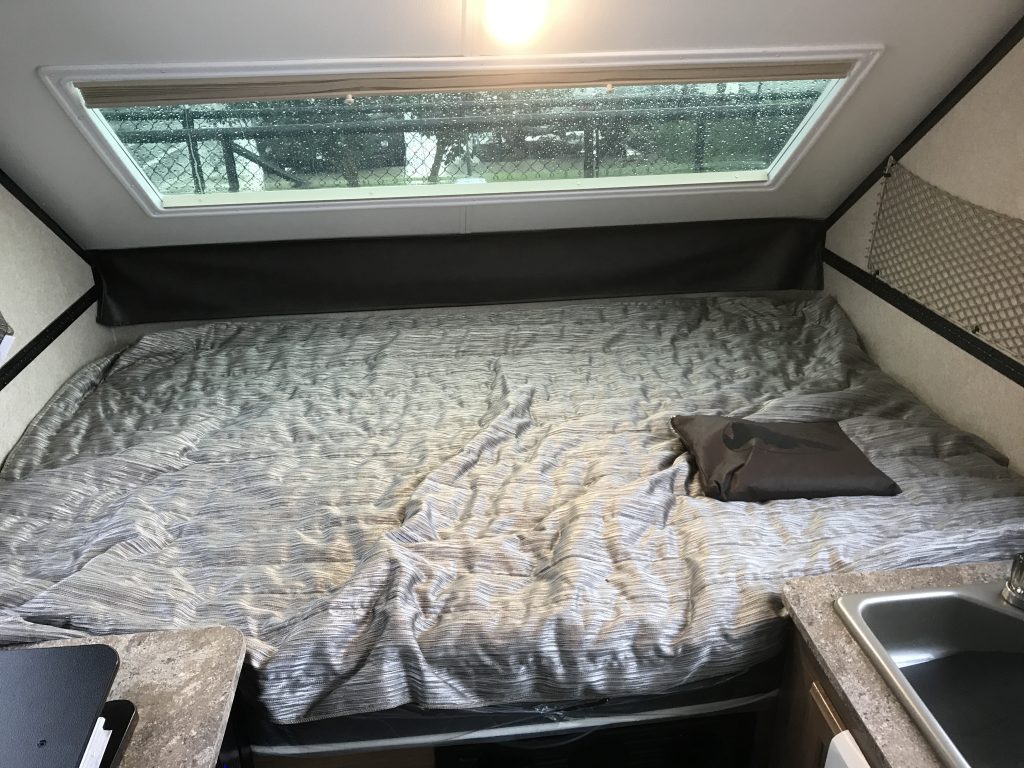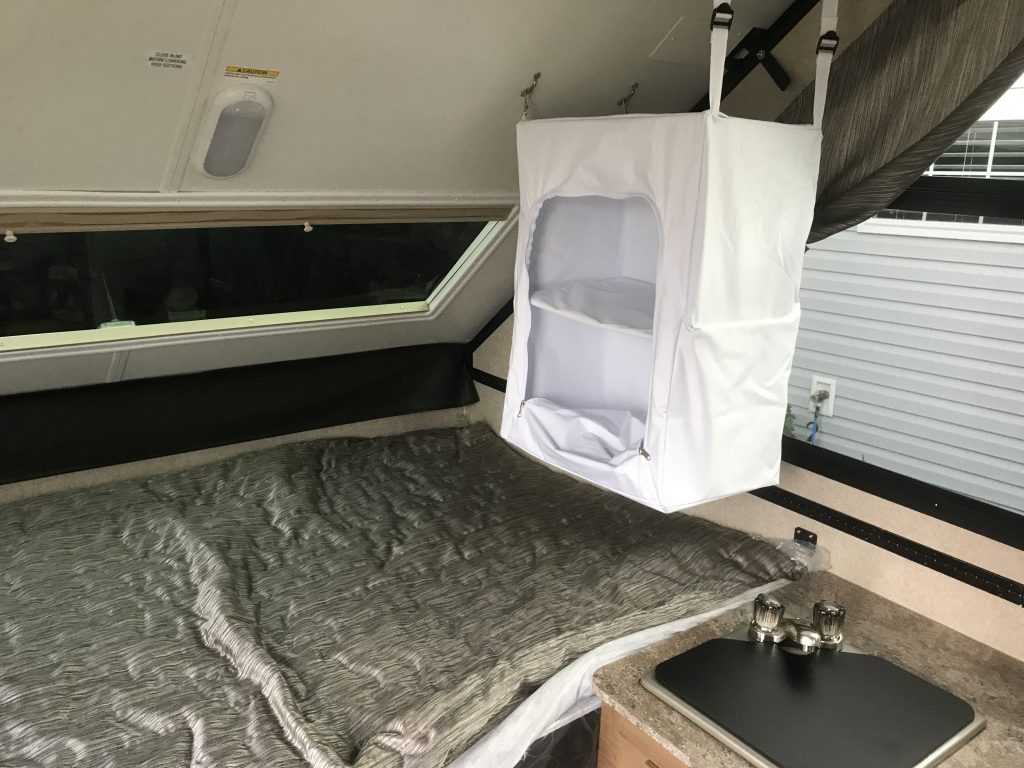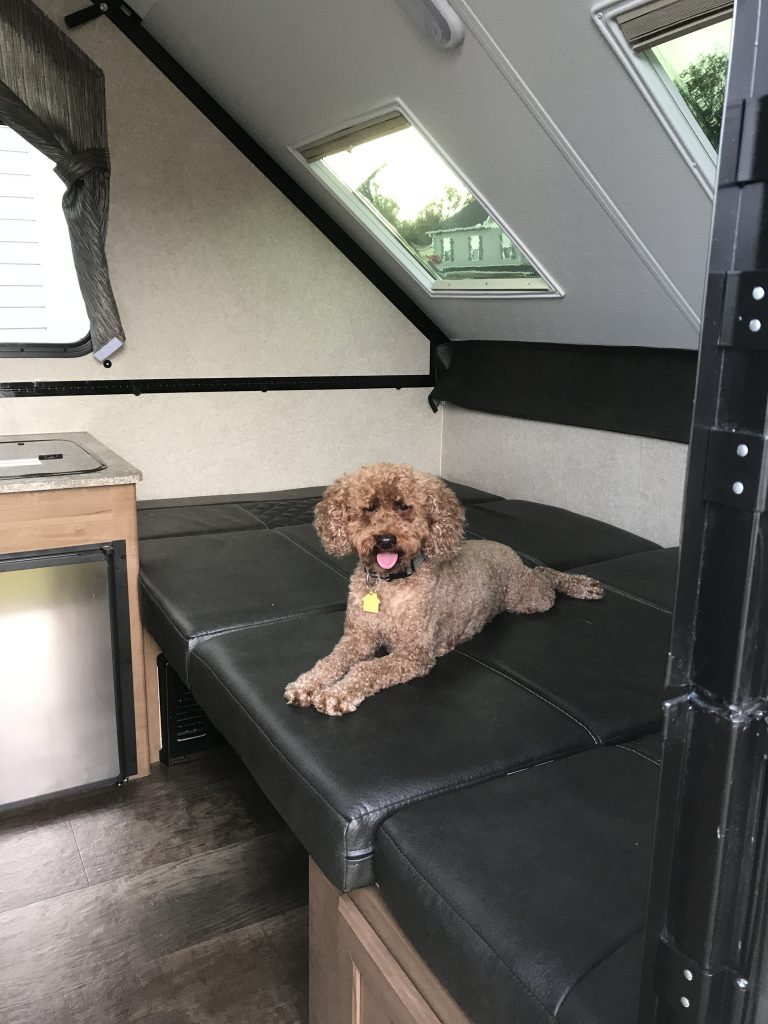In a world of convenience and with an aging body why in the world do I posses a desire to go live off grid for short stints and how am I going to pull it off? Or what if the SHTF? Already liberals are worried Iran is going to kill us. Silly liberals.
First of all the beauty of God’s earth is out THERE, not in my den. I feel like I’ve missed out on so much but while this body is still capable of independent movement it is time to shake it up a bit.
It helps to write out your plan sometimes and that is what I’m doing here. Mental dry run.
I already have the most important piece of the off grid puzzle and this will be the foundation for everything else I plan to do. I own a small Rockwood A122 pop up A frame camper.
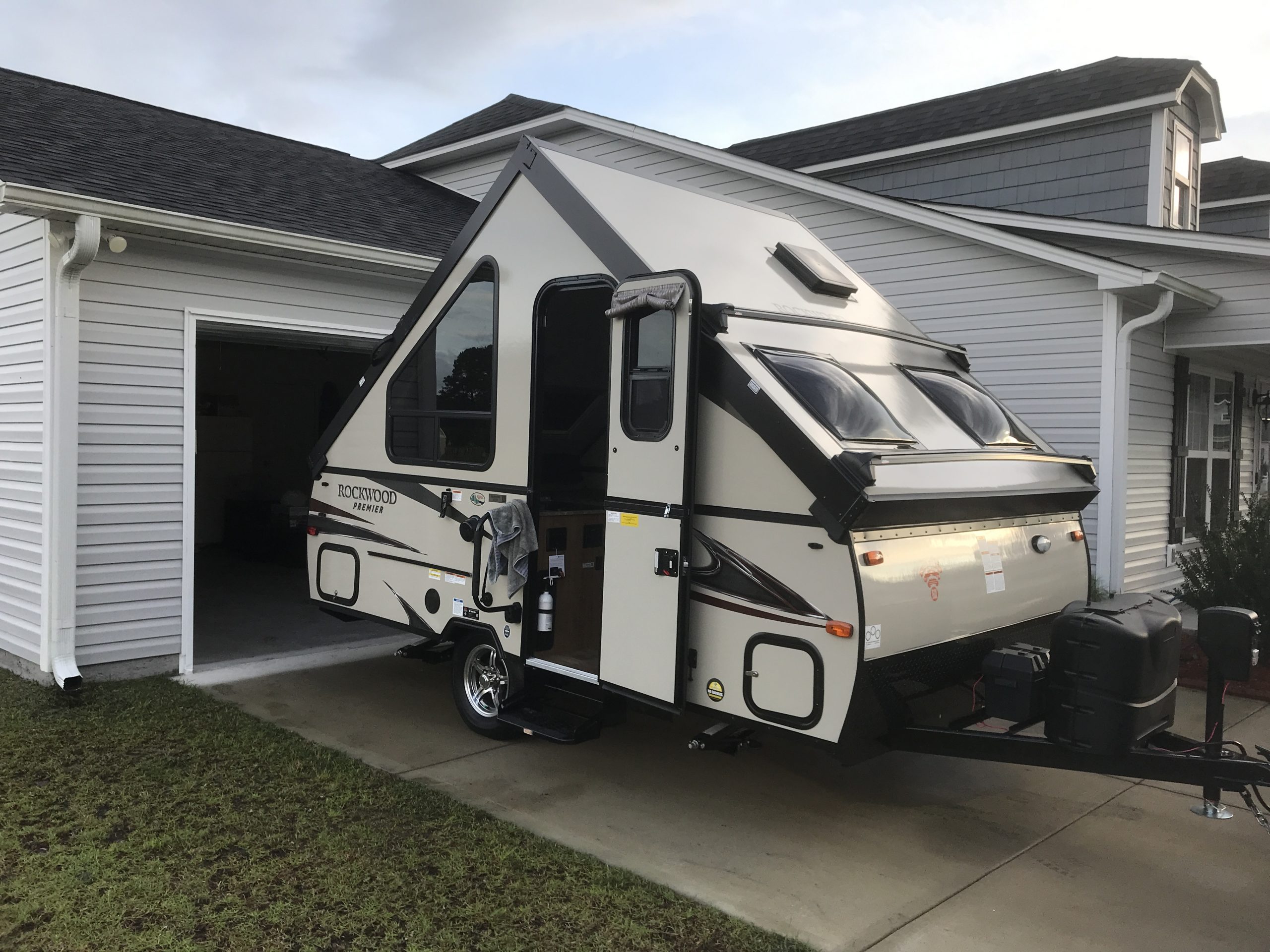
This is a great little rig and I’ve already had some great adventures with it. I take excellent care of it and it has everything a fella needs to sustain life in the great outdoors.
In fact it almost has too much. Air Conditioning, Heat Pump, Furnace, hot water heater, microwave, 3 burner stove, gas BBQ grill, electric mattress, sink, refrigerator, bluetooth stereo, cable TV connections, 26 gallon water tank, etc.
Throw in a Kuerig, a toaster oven, a poodle, and a good looking Southern Woman named India and it is truly a home away from home.
Rockwood A122 Camper (click pics to enlarge)
What doesn’t it have? A toilet. It does have a shower but it is outside. Brrrrr.
So it is well suited to pulling up in a campground near the bath house. All that fancy stuff listed above almost needs 30 amp power service. Or at the very least 110v service but you can forget about running the AC with 15 amps.
Now lets remove the campground power station from the equation. What does that leave you with?
- 12 volt vent fan
- LED Lights
- Front jack (12 volt or hand crank)
- water pump (12 volt)
- Hot Water Heater (propane)
- Furnace (propane)
- BBQ grill (propane)
- Refrigerator which can run on 12 volts or propane.
What do you lose?
- AC
- Heat Pump
- Microwave
- All 120 volt service and outlets
The camper has two 20 lb. propane bottles and that will last a LONG time UNLESS the furnace is needed and then all bets are off. On a cold, cold night you could consume an entire 20 lb. bottle of propane.
So to be off grid we also need to be PRACTICAL. This type of successful camping lends itself best to moderate temperatures such as realized in Spring and Autumn. And of course you probably won’t die in higher temperatures at night in the sweat box with no AC but you might be powerfully uncomfortable whereas you might die in the box with no heat in extreme cold. Don’t forget the truck has a heater too! Use what ya got.
Those 12 volt lights and fan and jack need a CHARGED battery. My camper has one 12v battery. Solar can keep the battery charged. There are about a thousand solar solutions but essentially I can keep this real simple because the battery is outside. Some campers have the battery inside a compartment not in the living space. Not so on the A122. It is the small box just behind the 40 lb. propane storage.
And you need a charge controller. And again normally with an indoor battery storage system and permanently mounted solar panels on the roof of your camper you’d want the charge controller inside where you can glance at it, just like you glance at a thermostat to make sure it is working.
Because my battery is outside and there isn’t adequate space to install solar panels on the slanted roof (actually there may be) but there is no guarantee you can park southern facing all the time I have opted for a solar kit where the panel can be moved around to follow the sun.

Renogy 100watt Solar Kit
I swiped that pic from the Amazon page where I ordered this from here. Very simple. The kit consists of a foldable solar panel array (2 – 50 watt panels) hooked to a solar charge controller that is WATERPROOF which clamps directly to the camper battery. The solar array has fold out legs on it as well.
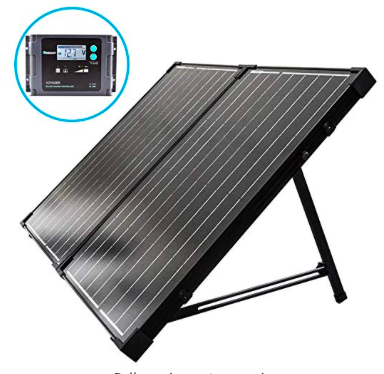
Renogy 100 watt solar panel kit
Again I had to swipe the pics from Amazon and I’ll replace them with my own when I receive the kit.
Now I have the ability to run 12 volt items such as camper lighting, and the water pump to get to my 26 gallons of onboard water storage and of course my ventilation fan.
What are my limitations here?
- No AC for blazing hot days
- No Heat Pump for cold days
- No electrical 120v service
- Increased propane usage especially if using furnace for heat
There are some solutions for all of these situations.
- Gasoline Generator
- Portable power station
- 12 volt power from the truck

Honda Generators
The two Honda gasoline generators can be slaved together to deliver 4000 watts of power to the camper. This will run the AC and all electrical outlets. Then of course you need to carry sufficient gasoline to run the generators. Take a wild guess though what one of the number one stolen items are around campsites? You guessed it. Honda EU generators.
Or to keep items such as laptops and cell phones charged the Honda By Jackery Portable Power Station can be used. Consequently it can ALSO BE CHARGED VIA SOLAR although the charge controller on the Renogy kit will only let you charge one item at a time. It’s either the camper battery or the Power Station.
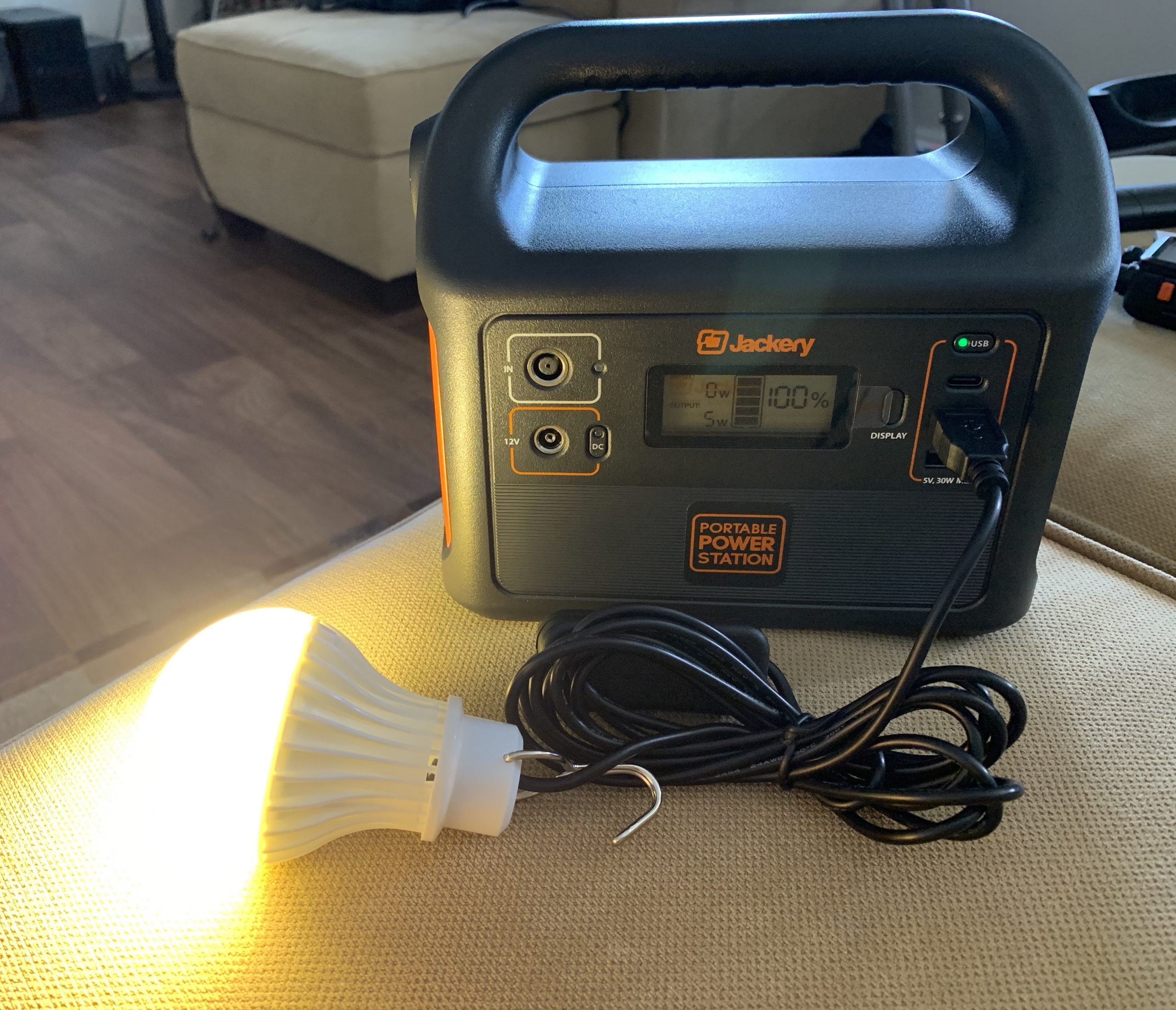
Jackery Power Station with LED Camping Light
You can of course buy an inexpensive separate solar panel for about $80 to $100 and you’ll also need an adapter cable to create a dedicated solar charger for the Jackery Power Station.

Renogy 100 watt, 12v panel directly charging Jackery 160
Sure its a lot of stuff to drag around but living off grid ISN’T SUPPOSED TO BE EASY. It’s supposed to be a test of brains and brawn, and it’s good for your soul.
Here’s something to think about regarding the Jackery power stations. They can also be charged via your 12 volt cigarette lighter (nowadays called a power socket due to political correctness) in your vehicle. The gotcha here is that if you just plug it in to the vehicle power port it will deplete the truck battery so you would want to have the vehicle running. Hey at least you have a solar panel to charge it back up, right 😃?
Also read ANY review on portable power stations and they’ll say stuff like ……….”it takes 8 to 10 hours of sunlight to fully charge the power station but I only get 4-6 hours of sunlight each day where I am”.
Now I’m no Nikola Tesla or Thomas Edison but the answer is kinda simple in my mind. Get TWO F***ing Power Stations. Problem solved. I work in military airfield lighting and we had the exact same issue with a lighting system. They worked 8 hours and needed 20 hours of charging. Do the math. It don’t work out. Our solution: Carry twice as many lights as you need. Is it a crummy solution? Sure. Does it work? You betcha it works.
Jackery makes their own solar panels which are pretty awesome as they are lightweight, they fold, they store nicely, etc. What’s the downside? They cost big $$$ and you can’t get them wet.
Yeah. No.
There’s a solution for that as well. Take the SolarSaga 100 panel ($300 OUCH) and put it behind your windshield in the truck. It fits. Park the truck facing into the sun, set the Jackery in the back seat and charge it. Not only does it stay dry but it stays locked up. Remember me telling you about Honda generators being stolen? Heck a Jackery Power station and solar panel would be remarkably easy to steal.
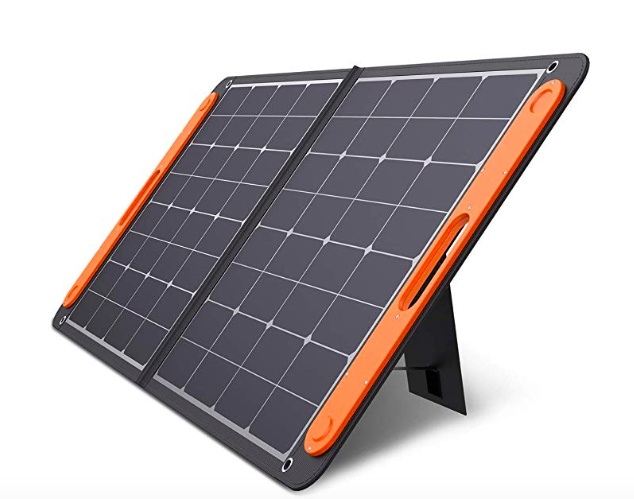
Jackery Solar Saga 100
So now we have the ways and means to keep the camper battery charged, and provide power to the laptop and cell phones.
Now what critical items are we lacking?
COFFEE.
Yikes. A coffee maker will draw about 1000 watts and our power station is about 292 watts max. Jackery makes a 500 watt power station , the Explorer 500 and Mr. Coffee makes a 650 watt coffee maker. Guess what? It works. It pulls slightly more than 500 watts but the Jackery covers it. Also here’s a trick to coffee pots. Let’s say you have a 1000 watt, 12 cup coffee maker. The less coffee you make the less water needs heated and the less draw the coffee maker pulls. The Mr. Coffee 650 watt coffee maker should make 2 cups easier than 4. I’ll be testing this soon. Also there are single cup coffee makers out there that draw 400 or so watts. That for sure will work. You’ve seen those single cup, crap coffee makers in some of your favorite hotel rooms before.
I can’t bring myself to use a hotel coffee maker. When I was a young spud in the Navy a bunch of us would get a hotel room on the weekends to drink tons of beer and chase girls. I woke up one morning and one guy was urinating in the coffee pot. When I asked him what in the hell he was doing he simply said, “I hate coffee and I hate people who drink coffee”.
Sorry about that. It had to be said.
How about drying your hair in an off grid situation? Conair makes a 1000 watt hair dryer and you’ll never get high speed to work but it will work on the Jackery 500 on the low setting. My girlfriend has hair on her hair and would probably take a month to dry on a low but I suppose it is better than nothing. You can use it to dry your shoes or boots as well. Also a hair dryer PUTS OUT HEAT. Yeah, I watched MacGyver when I was a kid.
My overall limitations:
- Propane – it might do to carry an extra bottle or two in the truck
- Water – 26 gallons of water is a lot but if cooking and cleaning and showering it will surely provide a limitation on the amount of time you can spend in the bush.
- Sunlight – No sunlight and the battery will deplete
- Gas generators – gooble lots of gas and must be secured to prevent theft. If you secure them to the camper frame they could produce more noise than you want. There are solutions to secure them to the bed of your truck with expensive mounts but you end up drilling holes in the bed. Not my thing, although I may look into this again soon.
To summarize:
To live off grid in a small camper you need to keep your 12 volt camper battery charged via solar. A portable power station that is solar rechargeable will allow you to use low power 120 volt appliances or keep your laptop and cell phone charged. Gasoline generators will power everything but use lots of gasoline.
Hope these off grid living tips helped.


